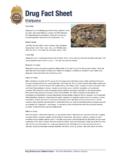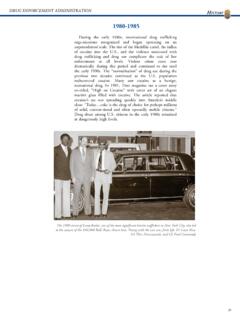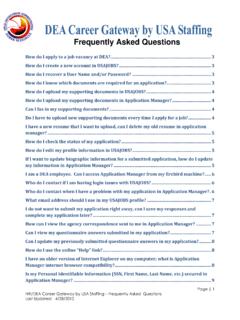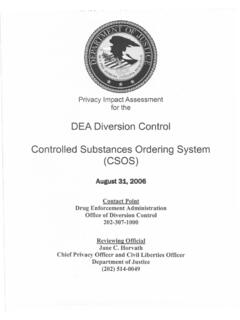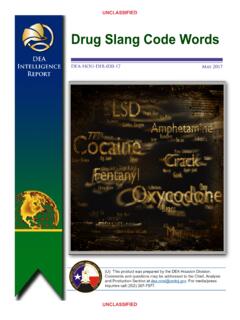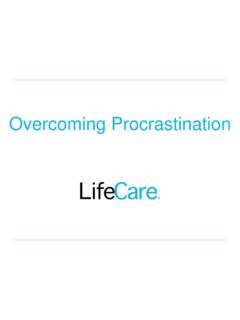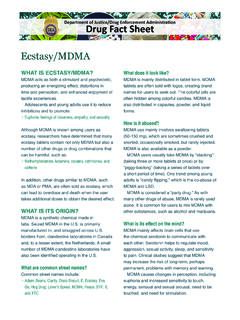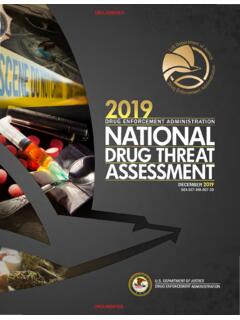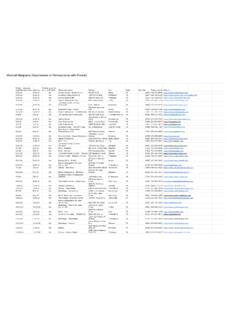Transcription of Drugs of Abuse (2017 Edition) - DEA
1 PRODUCED AND PUBLISHED BY Drug Enforcement Administration Department of Justice of AbuseA DEA RESOURCE GUIDE Contents Drugs OF Abuse I 2017 EDITION: A DEA Resource Guide 5 Welcome ..7 I. Controlled Substances Act ..8 Drug Scheduling ..15 Schedule I ..15 Schedule II ..22 Schedule III ..24 Schedule IV ..27 Schedule V ..29 Federal Trafficking Penalties ..30 Federal Trafficking Penalties marijuana ..31 II. Chemical Control ..32 Listed Chemicals Chart ..34 III. Introduction to Drug Classes ..36 IV. Narcotics ..38 Fentanyl ..40 Heroin ..42 Hydromorphone ..43 Methadone ..44 Morphine ..45 Opium ..46 Oxycodone ..47 V. Stimulants ..48 Amphetamines ..50 Cocaine ..51 Khat ..53 Methamphetamine ..54 VI. Depressants.
2 56 Barbiturates ..58 Benzodiazepines ..59 VII. Hallucinogens ..64 Ecstasy/MDMA ..66 Ketamine ..68 LSD ..70 Peyote & Mescaline ..71 Psilocybin ..72 VIII. marijuana /Cannabis ..74 marijuana Concentrates ..76 IX. Steroids ..78 X. Inhalants ..80 XI. Drugs of Concern ..82 DXM ..82 Kratom ..84 Salvia Divinorum ..85 XII. Designer Drugs ..86 Bath Salts or Designer Cathinones ..86 K2 /Spice ..88 Synthetic Opioids ..90 XIII. plays a critical role in preventing substance Abuse . Drugs of Abuse , A DEA Resource Guide, is designed to be a reliable resource on the most commonly abused and misused Drugs in the United States. This comprehensive guide provides important information about the harms and consequences of drug use by describing a drug s effects on the body and mind, overdose potential, origin, legal status, and other key facts.
3 Drugs of Abuse also offers a list of additional drug education and prevention resources, including the DEA websites: ; , aimed at teenagers; , designed for parents, educa-tors, and caregivers; and OF Abuse I 2017 EDITION: A DEA Resource Guide 7TO THE LATEST EDITION OF Drugs OF Abuse Welcome 8 Drugs OF Abuse I A DEA Resource Guide: 2017 EDITIONCONTROLLING Drugs OR OTHER SUBSTANCES THROUGH FORMAL SCHEDULING The Controlled Substances Act (CSA) places all substances which were in some manner regulated under existing federal law into one of five schedules. This placement is based upon the substance s medical use, potential for Abuse , and safety or dependence liability. The Act also provides a mechanism for substances to be controlled (added to or transferred between schedules) or decontrolled (removed from control).
4 The procedure for these actions is found in Section 201 of the Act ( 811). Proceedings to add, delete, or change the schedule of a drug or other substance may be initiated by the Drug Enforce-ment Administration (DEA), the Department of Health and Human Services (HHS), or by petition from any interested party, including: The manufacturer of a drug A medical society or association A pharmacy association A public interest group concerned with drug Abuse A state or local government agency An individual citizen When a petition is received by the DEA, the agency begins its own investigation of the drug. The DEA also may begin an investigation of a drug at any time based upon information received from law enforcement laboratories, state and local law enforcement and regulatory agencies, or other sources of information.
5 Once the DEA has collected the necessary data, the DEA Administrator, by authority of the Attorney General, requests from HHS a scientific and medical evaluation and recom-mendation as to whether the drug or other substance should be controlled or removed from control. This request is sent to the Assistant Secretary for Health of HHS. The Assistant Secretary, by authority of the Secretary, compiles the information and transmits back to the DEA: a medical and scientific evaluation regarding the drug or other substance, a recommendation as to whether the drug should be controlled, and in what schedule it should be placed. The medical and scientific evaluations are binding on the DEA with respect to scientific and medical matters and form a part of the scheduling decision.
6 Once the DEA has received the scientific and medical evalu-ation from HHS, the Administrator will evaluate all available data and make a final decision whether to propose that a drug or other substance should be removed or controlled and into which schedule it should be placed. If a drug does not have a potential for Abuse , it cannot be controlled. Although the term potential for Abuse is not defined in the CSA, there is much discussion of the term in the legislative history of the Act. The following items are indicators that a drug or other substance has a potential for Abuse : (1) There is evidence that individuals are taking the drug or other substance in amounts sufficient to create a hazard to their health or to the safety of other individuals or to the community.
7 (2) There is significant diversion of the drug or other sub-stance from legitimate drug channels. (3) Individuals are taking the drug or other substance on their own initiative rather than on the basis of medical advice from a practitioner. (4) The drug is a new drug so related in its action to a drug or other substance already listed as having a potential for Abuse to make it likely that the drug will have the same potential for Abuse as such Drugs , thus making it reasonable to assume that there may be significant diversions from legitimate chan-nels, significant use contrary to or without medical advice, or that it has a substantial capability of creating hazards to the I. Controlled Substances Act Drugs OF Abuse I 2017 EDITION: A DEA Resource Guide 9health of the user or to the safety of the community.
8 Of course, evidence of actual Abuse of a substance is indicative that a drug has a potential for Abuse . In determining into which schedule a drug or other substance should be placed, or whether a substance should be decontrolled or rescheduled, certain factors are required to be considered. These factors are listed in Section 201 (c), [21 811 (c)] of the CSA as follows: (1)The drug s actual or relative potential for Abuse . (2)Scientific evidence of the drug s pharmacological effect, if known. The state of knowledge with respect to the effects of a specific drug is, of course, a major consideration. For example, it is vital to know whether or not a drug has a hallucinogenic effect if it is to be controlled due to that effect.
9 The best available knowledge of the pharmacological properties of a drug should be considered. (3)The state of current scientific knowledge regarding the substance. Criteria (2) and (3) are closely related. However, (2) is primarily concerned with pharmacological effects and (3) deals with all scientific knowledge with respect to the substance. (4)Its history and current pattern of Abuse . To determine whether or not a drug should be controlled, it is important to know the pattern of Abuse of that substance. (5)The scope, duration, and significance of Abuse . In evaluating existing Abuse , the DEA Administrator must know not only the pattern of Abuse , but also whether the Abuse is widespread. (6)What, if any, risk there is to the public health.
10 If a drug creates dangers to the public health, in addition to or because of its Abuse potential, then these dangers must also be considered by the Administrator. (7)The drug s psychic or physiological dependence liability. There must be an assessment of the extent to which a drug is physi-cally addictive or psychologically habit forming. (8)Whether the substance is an immediate precursor of a substance already controlled. The CSA allows inclusion of immediate precursors on this basis alone into the appropriate schedule and thus safeguards against possibilities of clandestine manufacture. After considering the above listed factors, the Administrator must make specific findings concerning the drug or other substance.
